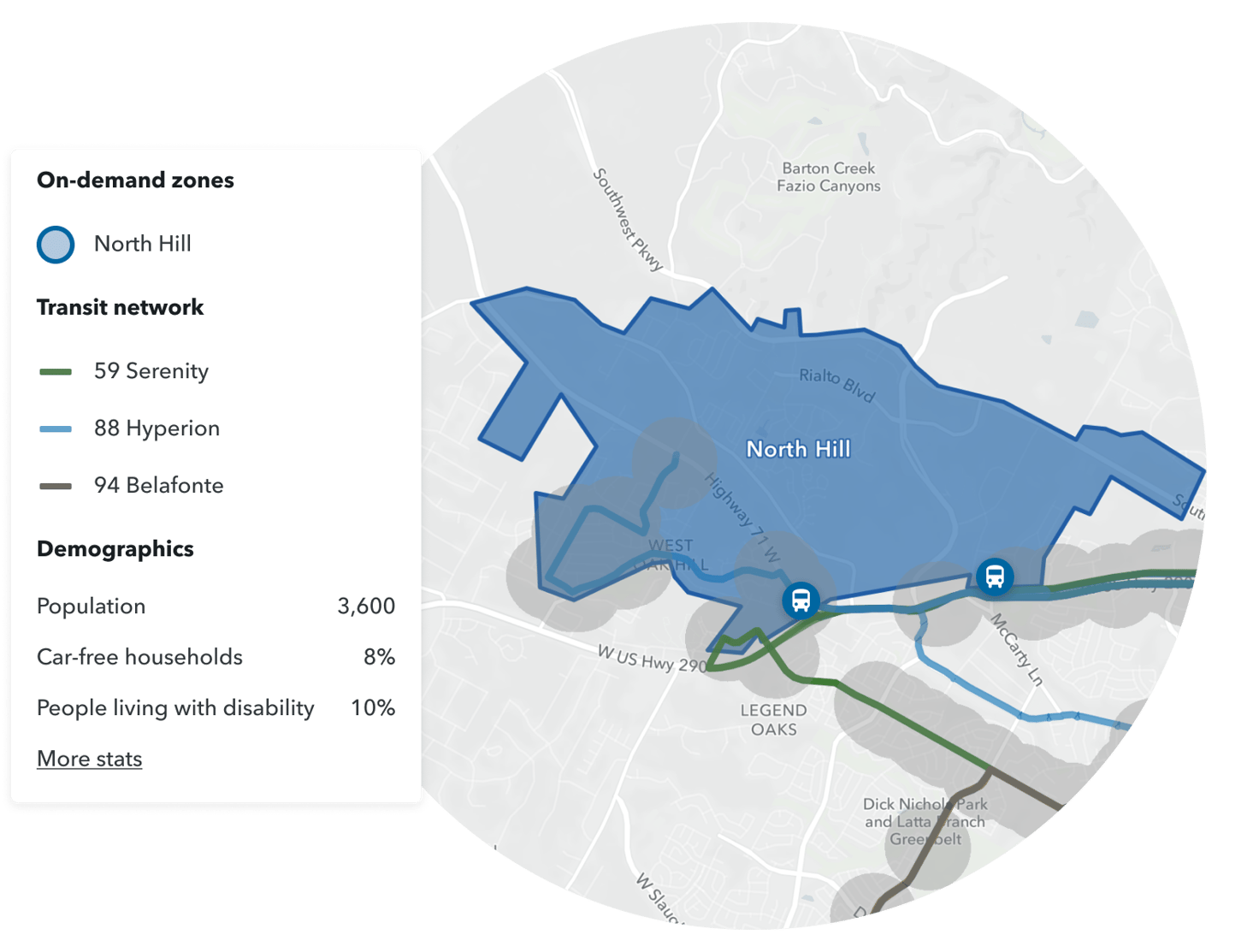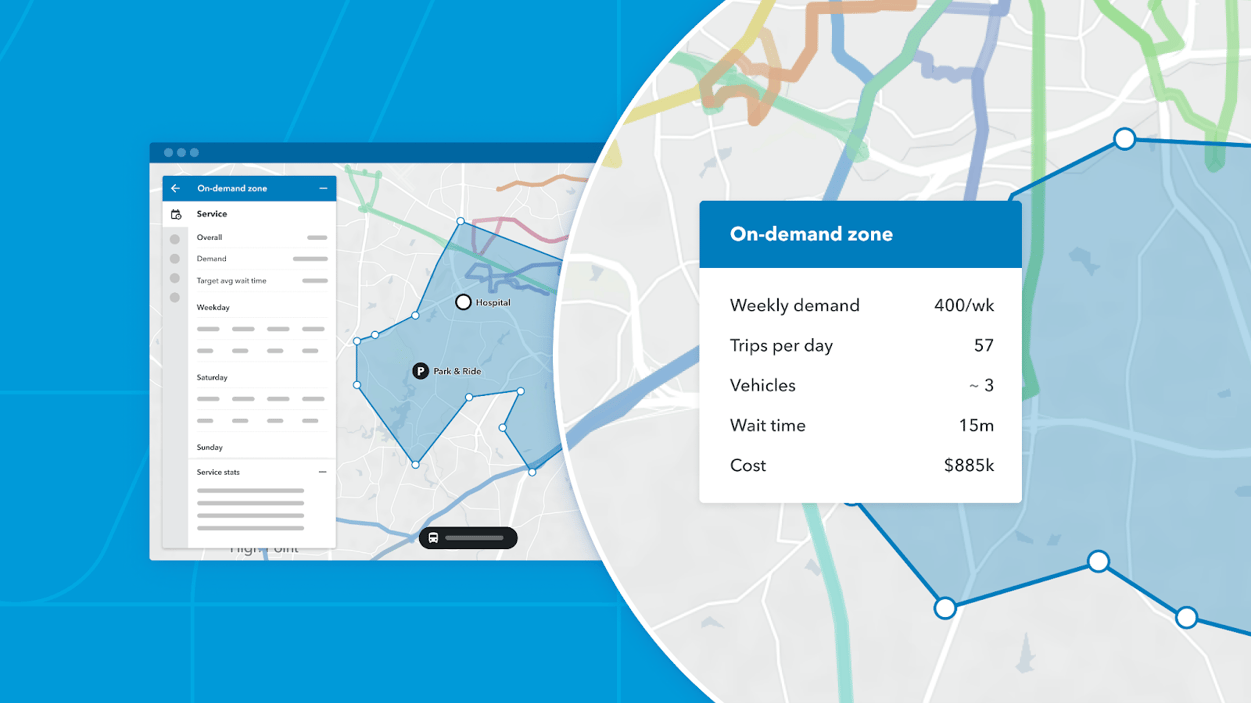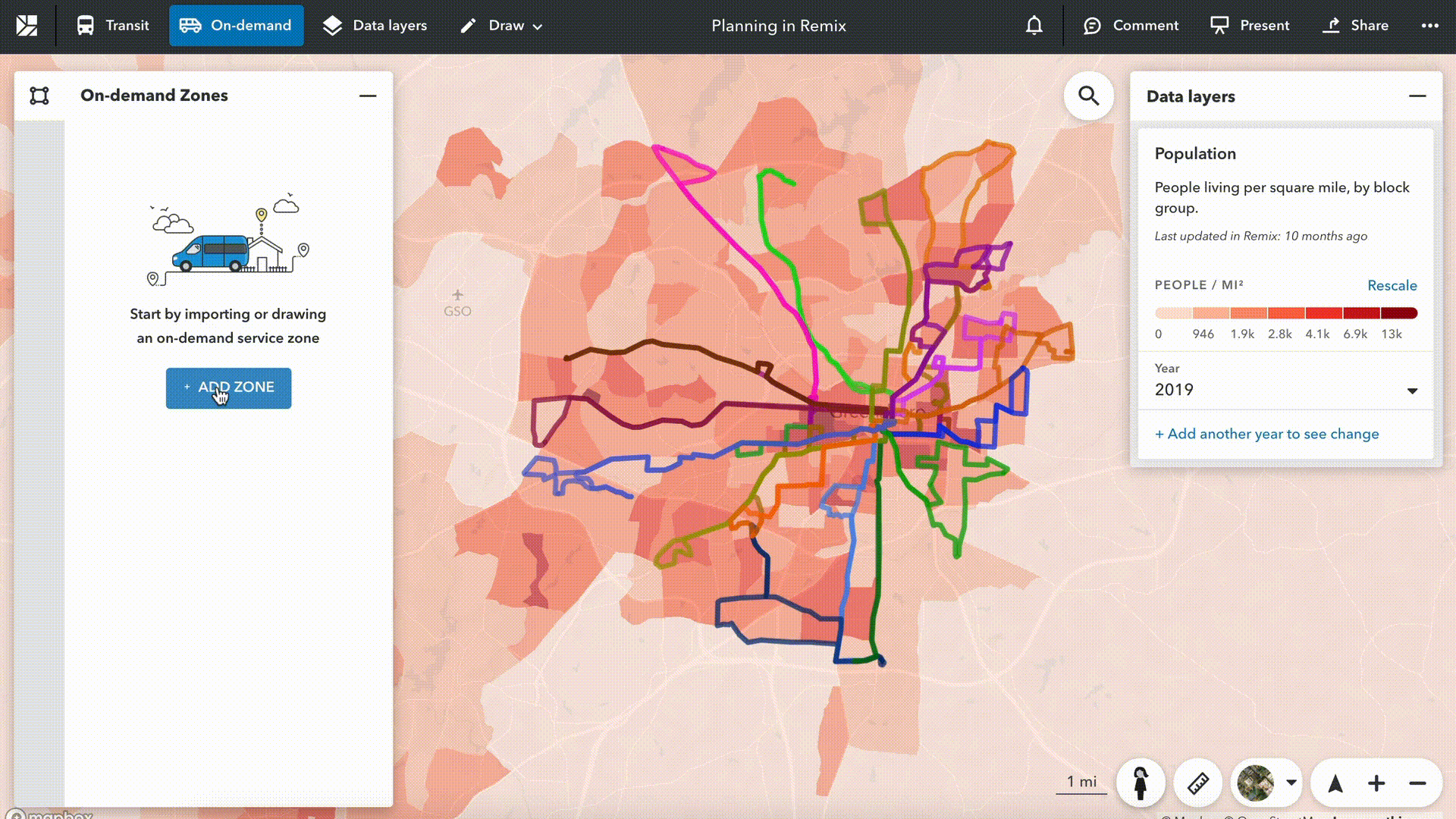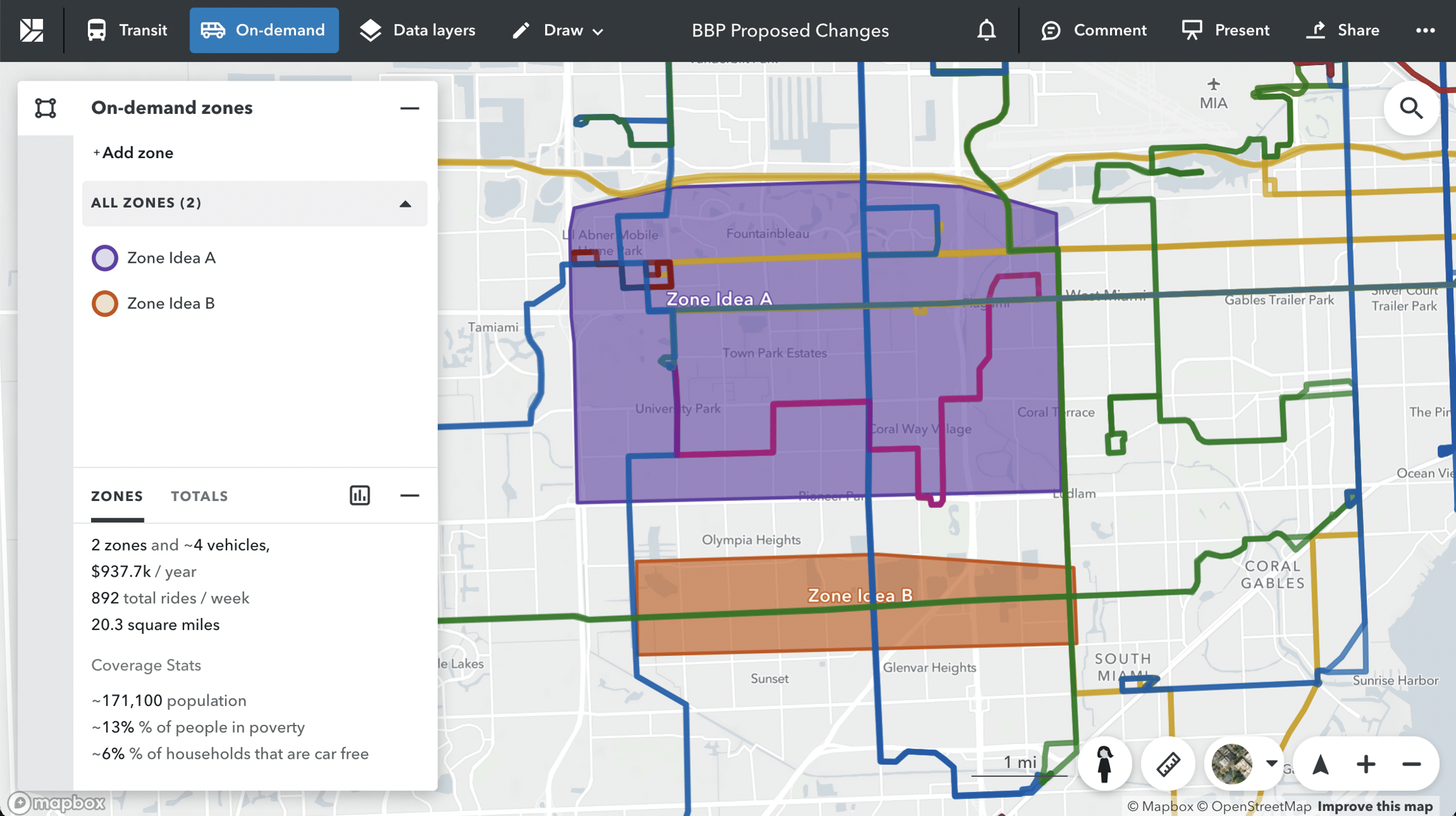Last year, when local budgets and ridership trends experienced newfound disruptions and challenges, transportation agencies responded with enormous creativity, adaptation, and speed to build crisis and recovery plans, like redesigning on-demand zones to improve access to hospitals, groceries, and food banks and increase service for essential workers. Realizing that a quick and nimble response isn’t a one time need, agencies are now using lessons learned to future proof against today’s challenges: federal aid comes and goes, ridership trends are shifting faster than ever before, and consumer expectations evolve as new technology becomes commonplace. For many communities, implementing flexible mobility programs, like on-demand zones, has become a necessary solution.
In order to maximize transportation’s potential to respond to shifting rider trends and growing concerns over climate change and social inequities, on-demand programs must be planned to augment other sustainable modes, especially the fixed-route network. That’s why we are thrilled to announce our most recent product, On-demand Planning: the first and only planning software for on-demand and flexible fleets that is backed by data from over 100 million shared Via rides, integrated with the fixed-route network, and collaborative.
What does On-demand Planning help you achieve?
Understand service gaps.
With Remix’s DNA in collaborative mapping and Via’s vast experience in on-demand transit, On-demand Planning fills a critical need for transportation planners seeking a holistic planning solution. You can visually explore multiple scenarios with instant demographic calculations easily and compare benefits and tradeoffs to find a solution that meets your community’s needs. Innovative Mobility Senior Planner Casey Gifford used On-demand Planning to understand what an on-demand zone around a new light rail station would look like. With Link light rail stations opening in the Seattle, WA region, King County Metro is turning to flexible mobility to fill service gaps. “Overall, On-demand Planning was super helpful as a starting point for understanding where to draw our service areas and how much service we can provide with our current budget. As a non-service planner, I was able to draft proposals and have data-driven, educated conversations with my service planning colleagues.”
Because planning also shouldn’t remain in functional silos, anyone — regardless of skill, role, or department — can use On-demand Planning to identify where to implement the most beneficial flexible mobility programs and what kind of service augments an existing fixed route network.

We hope that other cities and agencies across the globe use On-demand Planning to confidently understand how new zones can close gaps in transit deserts, increase access to fixed-route stations, or improve access for people living with disabilities or car-free households.
Evaluate impact before implementation.
Though on-demand programs have existed for decades in the form of Dial-a-Ride, paratransit, and other demand response services, agencies have found it difficult to plan for these flexible modes on their own without the proper technology for collecting and visualizing program data. When using On-demand Planning, planners leverage algorithms from Via’s proprietary data to model tradeoffs between service quality and cost. Data points from over 200 Via deployments and 90 million shared rides allow planners to model tradeoffs for any type of on-demand service, anywhere.
Use On-demand Planning to estimate demand, vehicle requirements, average passenger wait times, and cost.
Kyle Laird, Mobility and Systems Planner with Piedmont Authority for Regional Transportation (PART) in Greensboro, NC, used our On-demand Planning algorithms to kickstart conversations and refine their ideas around flexible mobility: “If I didn’t have this tool, I think we’d be at a standstill and wouldn’t have had the opportunity to get the conversation started before hiring a consultant.”
We hope, like PART, that more agencies use On-demand Planning to bring flexible mobility into the conversation earlier to facilitate consensus-building. “If I didn’t have this tool, I think we’d be at a standstill.”
— Kyle Laird, Mobility and System Planner with PART (Greensboro, NC)
Plan multimodally in order to optimize your whole network.
When used in tandem with other transportation modes, on-demand programs have the amazing potential to augment fixed route transit, close gaps in transit deserts, and provide solutions for first and last mile problems. We’ve recently redesigned Remix by Via’s planning platform to make multimodal planning easier so you can optimize your whole network — not just parts.

Agencies can look at their networks holistically - incorporating both fixed-route and on-demand programs in their analysis.
For their upcoming network redesign, the “Better Bus Network,” Miami-Dade County is leveraging multimodal planning to connect more people to more places. Carlos Cruz-Casas, Assistant Director of Miami-Dade County’s Department of Transportation, recently brought a multimodal lens to an executive conversation by showing fixed-route and on-demand options, on the fly, during a budget meeting. “I sat down next to the Director, drew an on-demand zone to substitute a low-performing fixed route. I was able to show that with the same number of vehicles, we can offer better service, and save resources that could be reallocated into increasing fixed-route frequency on higher demand routes.”
On-demand Planning enables planners to include both on-demand programs and fixed-route proposals in the decision-making process, ultimately strengthening the options for the overall network.
The combination of sophisticated on-demand modeling with intuitive visuals helps agencies have conversations about flexible mobility programs earlier.
We’d love to learn how your agency plans on-demand and other flexible mobility programs. We’re also happy to show you how to leverage our newest product. Reach out to us and let us work with you.






%206.png?width=71&height=47&name=The%20Buzz%20Blog%20Hero%20(1750%20x%201200%20px)%206.png)